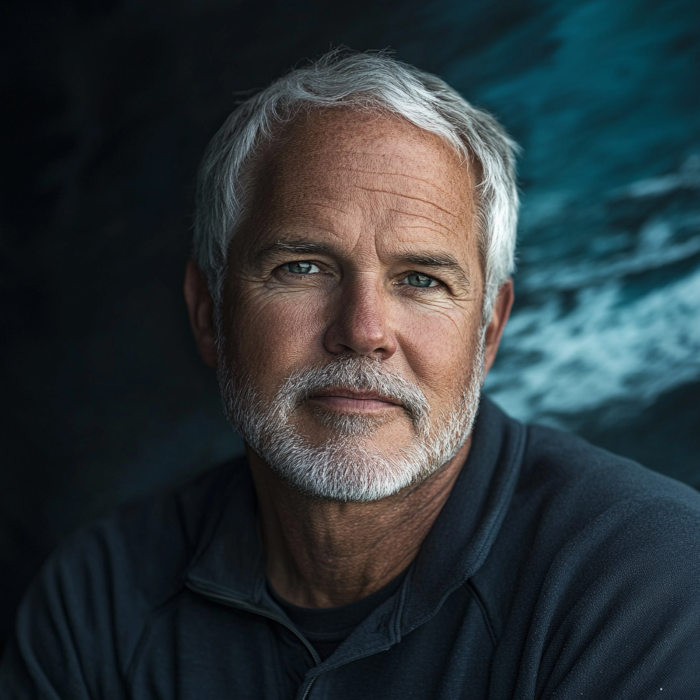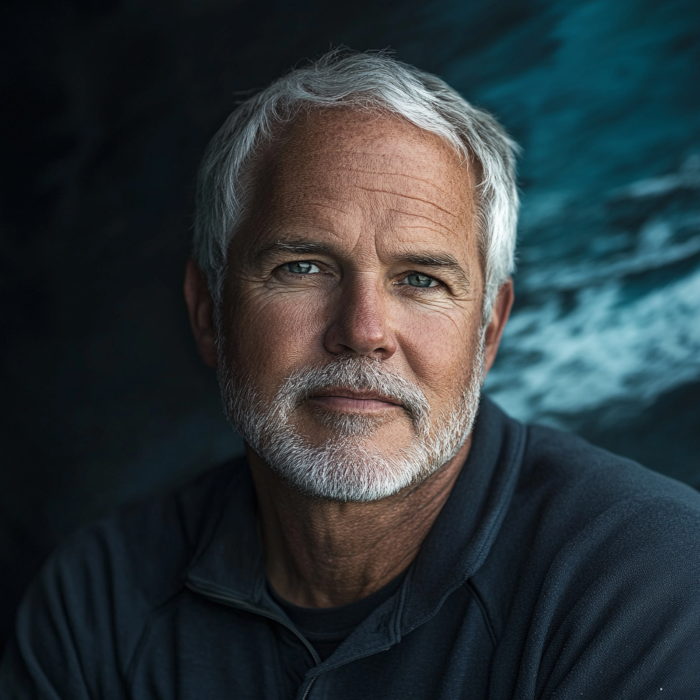


Robert Wyland (born July 9, 1956), known simply as Wyland, is an American artist and conservationist renowned for his large-scale murals depicting marine life, particularly whales and other ocean creatures. His work, which spans fine art, sculpture, and public murals, has been instrumental in raising awareness about marine conservation and the beauty of the underwater world. Wyland is also known for his dedication to environmental causes and his efforts to inspire a global movement to protect oceans and marine life.
Birth and Background: Robert Wyland was born on July 9, 1956, in Detroit, Michigan. He grew up in a family that encouraged creativity, and he showed an early interest in drawing and painting. His fascination with the ocean began at a young age, despite living far from the sea. Wyland was particularly inspired by the work of Jacques Cousteau, the famous French marine explorer, and filmmaker, whose documentaries about the underwater world captivated his imagination.
Education and Early Career: Wyland pursued his passion for art by studying at the Center for Creative Studies in Detroit, where he focused on painting and sculpture. After completing his studies, he moved to California, where he was drawn to the Pacific Ocean and the rich marine life along the coast. This move marked the beginning of his career as a marine life artist.
Whaling Walls Project: Wyland is best known for his "Whaling Walls," a series of large-scale murals depicting whales and other marine life. The first of these murals was painted in 1981 in Laguna Beach, California. Inspired by the success and impact of this initial work, Wyland set an ambitious goal to paint 100 such murals around the world by the year 2011. These murals, which are painted on the sides of buildings and other public spaces, are intended to bring attention to the beauty and fragility of the ocean and its inhabitants.
Global Reach: Wyland's Whaling Walls have been created in cities across the United States and in several other countries, including Japan, Australia, and France. The murals are massive in scale, often covering entire sides of buildings, and feature realistic depictions of whales, dolphins, sea turtles, and other marine life. Each mural is designed to inspire a connection with the ocean and encourage conservation efforts.
Completion of the Project: Wyland successfully completed his goal of painting 100 Whaling Walls in 2008, three years ahead of his original target. The final mural, titled "Hands Across the Oceans," was painted in Beijing, China. This project earned Wyland international recognition and solidified his reputation as a leading environmental artist.
Artistic Style: Wyland's art is characterized by its vivid realism and attention to detail, particularly in his depictions of marine animals. He uses bold colors and dynamic compositions to convey the movement and majesty of ocean life. His work often captures the serene, yet powerful, presence of whales and dolphins, which he considers to be symbols of the ocean's beauty and mystery.
Beyond Murals: In addition to his murals, Wyland has created a wide range of artwork, including paintings, sculptures, and photography. His fine art pieces often depict underwater scenes, coral reefs, and marine wildlife, capturing the vibrant colors and textures of the ocean. Wyland's work is displayed in galleries and museums around the world, and he has also published several books featuring his art and conservation messages.
Conservation Efforts: Wyland is deeply committed to environmental conservation and has used his art to promote awareness of the need to protect the world's oceans and marine life. He has collaborated with numerous environmental organizations, including the United Nations Environment Programme (UNEP), the National Oceanic and Atmospheric Administration (NOAA), and the U.S. Forest Service, to support conservation initiatives.
Wyland Foundation: In 1993, Wyland founded the Wyland Foundation, a nonprofit organization dedicated to promoting, protecting, and preserving the world's oceans, waterways, and marine life. The foundation focuses on educating the public, particularly young people, about the importance of environmental stewardship through art, science, and community programs. The Wyland Foundation has initiated several large-scale projects, such as the "Clean Water Challenge," which aims to raise awareness about water quality and conservation.
Education and Outreach: Through his foundation, Wyland has been actively involved in environmental education, hosting workshops, creating educational materials, and organizing events like the National Mayor’s Challenge for Water Conservation. His outreach efforts are aimed at inspiring the next generation of environmentalists and artists to take action in protecting the planet.
Cultural Impact: Wyland’s work has had a profound impact on public awareness of marine conservation. His Whaling Walls and other artworks have become iconic symbols of the environmental movement, and his efforts have helped to bring the beauty and importance of the ocean to people around the world, even those who live far from the sea.
Recognition and Awards: Wyland has received numerous awards and honors for his contributions to art and conservation, including recognition from environmental organizations and government agencies. His work has been praised for its ability to inspire positive change and for making a significant difference in the global effort to protect the environment.
Continued Influence: Wyland continues to create art and advocate for environmental causes. His dedication to both his craft and his mission to protect the ocean ensures that his influence will continue for generations to come. His work remains a testament to the power of art as a tool for education, inspiration, and change.
Robert Wyland is an artist and environmentalist whose work transcends the boundaries of traditional art to become a powerful force for conservation. Through his Whaling Walls, fine art, and philanthropic efforts, Wyland has brought attention to the beauty and fragility of the ocean and its inhabitants, inspiring millions to care for and protect our planet's most vital resources. His legacy as an artist and advocate for the environment continues to grow, making him a significant figure in both the art world and the global environmental movement.

We use cookies
We use cookies and other tracking technologies to improve your browsing experience on our website, to show you personalized content and targeted ads, to analyze our website traffic, and to understand where our visitors are coming from. Privacy Policy.